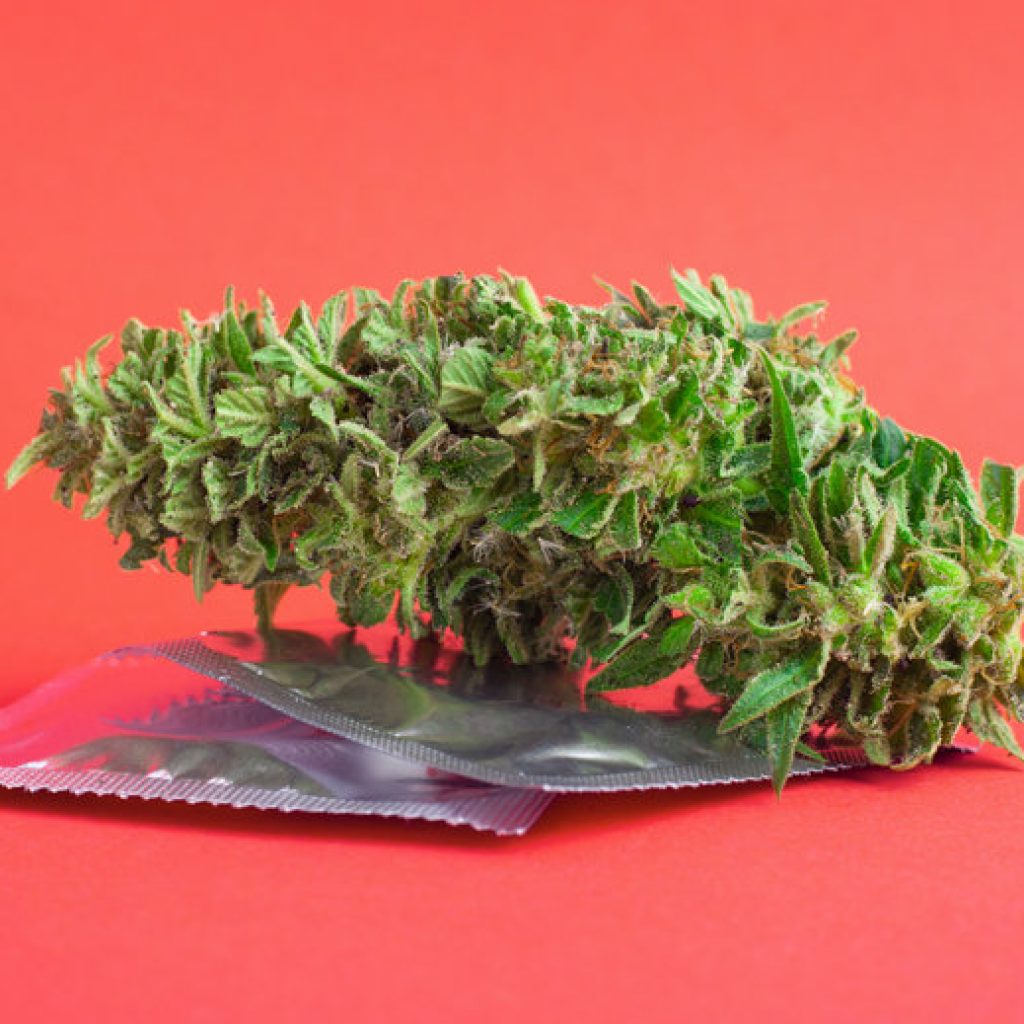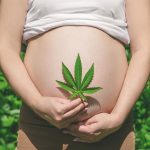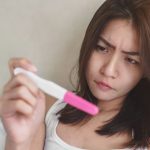JAKE F. FELICE, ND, LMP
Cannabis use for medical and recreational purposes remains high in adults of reproductive age, and it is important for clinicians to be aware of the potential risks and misconceptions regarding cannabis and male fertility. With an estimated 10-15% of sexually active couples seeking fertility consultations, it is likely that practitioners will encounter patients dealing with infertility issues that also use cannabis.1 Media coverage of medical and recreational cannabis appears disjointed, with some outlets exaggerating claims of harm, while other outlets champion cannabis as a non-toxic heal-all remedy. Patients may have concerns regarding their cannabis use, or they may be unaware of its potential to impact fertility. Clinicians need to be informed about the current status of the research regarding male infertility and cannabis use, and to know how to discuss with patients the conflicting opinions that exist not only in popular culture, but within the scientific community as well.
Several recent large-scale studies, for example, suggest that the use of cannabis does not adversely affect overall reproductive health or fertility in men, and that cannabis is not associated with compromised fertility outcomes for couples undergoing in vitro fertilization.2-4 Despite these findings, tetrahydrocannabinol (THC) has been shown to decrease gonadotropin-releasing hormone (GnRH),5 and it is well known that cannabis and cannabinoids interact with hormonal systems, including the hypothalamic-pituitary-adrenal axis6 and the hypothalamic-pituitary-gonadal axis.7 Clinicians should note that cannabis has the potential to affect several parameters of male reproductive health, and of primary concern are findings of lowered sperm count and concentration, as well as altered sperm morphology, reduced viability, motility, and fertilization capacity.8
Cannabis is not an outlier when it comes to medications that can potentially affect fertility. A large number of commonly prescribed pharmaceutical drugs can also negatively affect male fertility, including antidepressants, anti-inflammatory agents, analgesics, calcium channel blockers, alpha-blockers, anti-epileptic agents, antiretroviral drugs, immunomodulators, immunosuppressive drugs, corticosteroids, opiates, diuretics, antiarrhythmics, antineoplastic agents, and hormones.1,9,10 It is important to keep the evidence in perspective, both regarding cannabis and these other medications. Newer data suggests that cannabis may not affect male fertility. Clinicians must remain vigilant; however, and take this information in the context of prior research and a full fertility workup in order to best inform their diagnosis and treatment.
The Endocannabinoid System (ECS)
The ECS consists of the cannabinoid receptors CB1 and CB2; endogenous ligands (endocannabinoids) such as anandamide (AEA), 2-arachidonoylglycerol (2-AG), and their transport mechanisms; and the endocannabinoid-metabolizing enzymes FAAH and MAGL, which degrade AEA and 2-AG respectively. The primary function of the ECS is to maintain homeostasis across multiple organ systems,11 which includes production, transport, and degradation of endocannabinoid molecules. The specific interactions of exogenous cannabinoids with the ECS and its endogenous receptors is yet unknown; however, it is important to note that the locations of these receptors determine which systems may be affected by cannabis use.
Endocannabinoid receptors relevant to male reproduction include the CB1 receptor found in human testes and sperm.12-16 CB1 and CB2 receptors are also found in human seminal vesicles and it is believed that the ECS controls seminal vesicle secretion.13 Additional cannabinoid receptors are also found within the smooth muscle of the corpus cavernosum.12 In the central nervous system, CB1 receptors located on axon terminals can affect the release of serotonin and dopamine; 2 neurotransmitters implicated in the regulation of arousal, sexual function, and sexual behavior.17
Semen
It is thought that cannabis may affect sperm parameters by increasing levels of the endocannabinoid AEA.18-21 In vitro and animal models indicate that cannabis can reduce sperm count as well as negatively affect morphology and sperm function, including viability, motility, energy metabolism, and fertilization capacity.8,18-20,22-29 A 2015 study by Gunderson et al of 1215 men found that frequent (weekly or greater) cannabis users had lower total sperm counts and lower sperm concentrations than non-cannabis users.30 A prospective study of more than 1600 British men using cannabis demonstrated abnormal sperm morphology when compared to case-matched controls.31 A 2019 study by Payne et al reviewing both animal and human studies also indicated that cannabis use may reduce sperm count, sperm concentration, motility, energy metabolism, and fertilizing capacity.32
Reproductive Hormones
Luteinizing Hormone (LH)
Cannabis exposure in animal and human models show consistent decreases in luteinizing hormone (LH) levels.33-36 One notable exception is a small 1974 human study of 20 men by Kolodny et al, which showed no differences in LH levels between moderate and heavy cannabis users.37
Follicle-Stimulating Hormone (FSH)
Very few studies have been published examining follicle stimulating hormone (FSH) levels and cannabis use, with most studies failing to indicate significant effects.33-35 It is conceivable that FSH may not be affected by cannabis. The 1974 study by Kolodny et al did show statistically significant decreases in FSH levels of chronic, high-dose cannabis users.37
Testosterone
The potential influences of cannabis on testosterone are multifactorial, and study results vary. Many older animal studies and a few small human studies of cannabis use showed reductions in testosterone levels.23,38-41 For example, in addition to lowered FSH, the 1974 study by Kolodny et al also identified significantly reduced testosterone in its 20 male participants.37 A 1974 study by Mendelson et al of chronic cannabis users, however, showed no significant alterations in plasma levels of testosterone in its 27 male participants.40 A 1986 crossover study of 4 healthy men also found non-significant changes in testosterone and free testosterone levels.33 And a 1990 study of 41 healthy controls and 66 daily cannabis users showed that there were no significant plasma testosterone differences between the 2 groups.41
More recent, large-cohort studies have continued to produce mixed evidence regarding cannabis use and testosterone levels. The 2015 study by Gunderson et al of 1215 Danish men found that testosterone levels were 7% higher in non-cannabis users, though these levels could not be separated from possible confounding errors due to concomitant tobacco use.30 A large Canadian patient cohort study from a single academic andrology clinic found that regular cannabis use was not associated with clinically significant negative effects on male sexual parameters, including serum testosterone.4 A second large study in 2017 looked at serum testosterone, cannabis use, and covariates of 1577 men from the 2011-2012 National Health and Nutrition Examination Survey.42 Upon multivariable analysis, there was no difference in serum testosterone between heavy users and cannabis-naive never users.42 Serum testosterone was inversely associated with time since last regular use of cannabis; however, indicating that recent cannabis use, rather than frequency of use, may more strongly correlate with lowered testosterone levels. More studies in this area are needed to further clarify the data.
Testicular Atrophy
Animal models show clear indications of testicular atrophy with continued cannabis consumption,23,24,43-47 due in part to direct damage to the seminiferous tubules. Because results from animal studies do not often translate directly to humans, further study is required to determine if cannabis use affects the seminiferous tubules in humans.
Sexual Behavior & Function
Cannabis research indicates paradoxical consequences regarding sexual behavior and function after use. Data suggests cannabis can induce short term libido enhancement while also contributing to erectile dysfunction (ED). Cannabis is commonly used to enhance sexual enjoyment, and many cannabis users report that cannabis can help them relax, heighten their sensitivity to touch, and increase the intensity of their feelings.48,49 Animal studies on cannabis show reduced libido with regular use.50,51
A 2008 study by Aversa et al of men with erectile dysfunction found that cannabis likely induces ED via a reduction in endothelial dependent vasodilation.52 It is likely that this mechanism is mediated by cannabinoid activation of neuronal nitric oxide synthase.53 Interestingly, a CB1 antagonist in rats induced erection when injected into the paraventricular nucleus.54 Again, confirmation of these results requires further human study.
Summary
Resolving conflicting data is often difficult – for practitioners, and especially for patients. Many older, less robust, in-vitro and animal studies suggested potential reproductive harms from cannabis. Newer, more detailed human data appear to negate the bulk of those preliminary findings. Human sperm have cannabinoid receptors, and the strongest evidence of the negative effects of cannabis use on male fertility is in the area of semen parameters. Evidence regarding testosterone levels is inconclusive, though newer studies suggest that cannabis may not significantly affect testosterone levels in most men. LH levels may be decreased, while FSH levels appear unchanged by cannabis. As with most data regarding animal studies, it is unclear if damage from cannabis to the seminiferous tubules in animals would translate to humans. Additionally, cannabis may increase sexual libido while at the same time impacting erectile dysfunction. All of this information should be considered in the context of a full fertility workup when working with male patients having difficulty conceiving.
The best method for resolving conflicting data is to gather more information. Additional studies, including large randomized controlled trials, are needed to fully establish the effects of cannabis use on semen parameters, reproductive hormones, sexual behavior and function, and how data from animal models can be applied to clinical decision-making processes in humans. It is also important to ask patients directly about their cannabis use. By applying what we do know, that newer studies indicate cannabis use may be less problematic regarding male infertility, practitioners can alleviate some of their patients’ concerns and explore other diagnostic avenues. By keeping in mind the fact that cannabis does have the potential to affect male fertility parameters, practitioners can also utilize caution and practical decision making when working with patients either using or considering the use of high-dose cannabis.
References:
- Brezina PR, Yunus FN, Zhao Y. Effects of pharmaceutical medications on male fertility. J Reprod Infertil. 2012;13(1):3-11.
- Har-Gil E, Heled A, Dixon M, et al. The relationship between cannabis use and IVF outcome-a cohort study. J Cannabis Res. 2021;3(1):42.
- Wise LA, Wesselink AK, Hatch EE, et al. Marijuana use and fecundability in a North American preconception cohort study. J Epidemiol Community Health. 2018;72(3):208-215.
- Shiff B, Blankstein U, Hussaen J, et al. The impact of cannabis use on male sexual function: A 10-year, single-center experience [published online ahead of print]. Can Urol Assoc J. 2021;10.5489/cuaj.7185.
- Gammon CM, Freeman GM Jr, Xie W, et al. Regulation of gonadotropin-releasing hormone secretion by cannabinoids. Endocrinology. 2005;146(10):4491-4499.
- Cota D, Steiner MA, Marsicano G, et al. Requirement of cannabinoid receptor type 1 for the basal modulation of hypothalamic-pituitary-adrenal axis function. Endocrinology. 2007;148(4):1574-1581.
- Hillard CJ. Endocannabinoids and the Endocrine System in Health and Disease. Handb Exp Pharmacol. 2015;231:317-339.
- Bari M, Battista N, Pirazzi V, Maccarrone M. The manifold actions of endocannabinoids on female and male reproductive events. Front Biosci (Landmark Ed). 2011;16:498-516.
- Semet M, Paci M, Saïas-Magnan J, et al. The impact of drugs on male fertility: a review. Andrology. 2017;5(4):640-663.
- Ding J, Shang X, Zhang Z, et al. FDA-approved medications that impair human spermatogenesis. Oncotarget. 2017;8(6):10714-10725.
- Kunos G. Understanding metabolic homeostasis and imbalance: what is the role of the endocannabinoid system?. Am J Med. 2007;120(9 Suppl 1):S18-S24.
- Gratzke C, Christ GJ, Stief CG, et al. Localization and function of cannabinoid receptors in the corpus cavernosum: basis for modulation of nitric oxide synthase nerve activity. Eur Urol. 2010;57(2):342-348.
- Ückert S, la Croce G, Bettiga A, et al. Expression and distribution of key proteins of the endocannabinoid system in the human seminal vesicles. Andrologia. 2018;50(2):e12875.
- Cobellis G, Cacciola G, Scarpa D, et al. Endocannabinoid system in frog and rodent testis: type-1 cannabinoid receptor and fatty acid amide hydrolase activity in male germ cells. Biol Reprod. 2006;75(1):82-89.
- Schlicker E, Kathmann M. Modulation of transmitter release via presynaptic cannabinoid receptors. Trends Pharmacol Sci. 2001;22(11):565-572.
- Aquila S, Guido C, Santoro A, et al. Human sperm anatomy: ultrastructural localization of the cannabinoid1 receptor and a potential role of anandamide in sperm survival and acrosome reaction. Anat Rec (Hoboken). 2010;293(2):298-309.
- Klein C, Hill MN, Chang SC, et al. Circulating endocannabinoid concentrations and sexual arousal in women. J Sex Med. 2012;9(6):1588-1601.
- Schuel H, Burkman LJ. A tale of two cells: endocannabinoid-signaling regulates functions of neurons and sperm. Biol Reprod. 2005;73(6):1078-1086.
- Schuel H, Burkman LJ, Lippes J, et al. Evidence that anandamide-signaling regulates human sperm functions required for fertilization. Mol Reprod Dev. 2002;63(3):376-387.
- Rossato M, Ion Popa F, Ferigo M, et al. Human sperm express cannabinoid receptor Cb1, the activation of which inhibits motility, acrosome reaction, and mitochondrial function. J Clin Endocrinol Metab. 2005;90(2):984-991.
- Maccarrone M, Barboni B, Paradisi A, et al. Characterization of the endocannabinoid system in boar spermatozoa and implications for sperm capacitation and acrosome reaction. J Cell Sci. 2005;118(Pt 19):4393-4404.
- Huang HF, Nahas GG, Hembree WC 3rd. Effects of marihuana inhalation on spermatogenesis of the rat. Adv Biosci. 1978;22-23:419-427.
- Banerjee A, Singh A, Srivastava P, et al. Effects of chronic bhang (cannabis) administration on the reproductive system of male mice. Birth Defects Res B Dev Reprod Toxicol. 2011;92(3):195-205.
- Dixit VP, Gupta CL, Agrawal M. Testicular degeneration and necrosis induced by chronic administration of cannabis extract in dogs. Endokrinologie. 1977;69(3):299-305.
- Zimmerman AM, Zimmerman S, Raj AY. Effects of cannabinoids on spermatogenesis in mice. Adv Biosci. 1978;22-23:407-418.
- Generoso WM, Cain KT, Cornett CV, Shelby MD. Tests for induction of dominant-lethal mutations and heritable translocations with tetrahydrocannabinol in male mice. Mutat Res. 1985;143(1-2):51-53.
- Whan LB, West MC, McClure N, Lewis SE. Effects of delta-9-tetrahydrocannabinol, the primary psychoactive cannabinoid in marijuana, on human sperm function in vitro. Fertil Steril. 2006;85(3):653-660.
- Barbonetti A, Vassallo MR, Fortunato D, et al. Energetic metabolism and human sperm motility: impact of CB1 receptor activation. Endocrinology. 2010;151(12):5882-5892.
- Badawy ZS, Chohan KR, Whyte DA, et al. Cannabinoids inhibit the respiration of human sperm. Fertil Steril. 2009;91(6):2471-2476.
- Gundersen TD, Jørgensen N, Andersson AM, et al. Association Between Use of Marijuana and Male Reproductive Hormones and Semen Quality: A Study Among 1,215 Healthy Young Men. Am J Epidemiol. 2015;182(6):473-481.
- Pacey AA, Povey AC, Clyma JA, et al. Modifiable and non-modifiable risk factors for poor sperm morphology. Hum Reprod. 2014;29(8):1629-1636.
- Payne KS, Mazur DJ, Hotaling JM, Pastuszak AW. Cannabis and Male Fertility: A Systematic Review. J Urol. 2019;202(4):674-681.
- Cone EJ, Johnson RE, Moore JD, Roache JD. Acute effects of smoking marijuana on hormones, subjective effects and performance in male human subjects. Pharmacol Biochem Behav. 1986;24(6):1749-1754.
- Wenger T, Rettori V, Snyder GD, et al. Effects of delta-9-tetrahydrocannabinol on the hypothalamic-pituitary control of luteinizing hormone and follicle-stimulating hormone secretion in adult male rats. Neuroendocrinology. 1987;46(6):488-493.
- Vescovi PP, Pedrazzoni M, Michelini M, et al. Chronic effects of marihuana smoking on luteinizing hormone, follicle-stimulating hormone and prolactin levels in human males. Drug Alcohol Depend. 1992;30(1):59-63.
- Wenger T, Fernández-Ruiz JJ, Ramos JA. Immunocytochemical demonstration of CB1 cannabinoid receptors in the anterior lobe of the pituitary gland. J Neuroendocrinol. 1999;11(11):873-878.
- Kolodny RC, Masters WH, Kolodner RM, Toro G. Depression of plasma testosterone levels after chronic intensive marihuana use. N Engl J Med. 1974;290(16):872-874.
- Wenger T, Ledent C, Csernus V, Gerendai I. The central cannabinoid receptor inactivation suppresses endocrine reproductive functions. Biochem Biophys Res Commun. 2001;284(2):363-368.
- List A, Nazar B, Nyquist S, Harclerode J. The effects of delta9-tetrahydrocannabinol and cannabidiol on the metabolism of gonadal steroids in the rat. Drug Metab Dispos. 1977;5(3):268-272.
- Mendelson JH, Kuehnle J, Ellingboe J, Babor TF. Plasma testosterone levels before, during and after chronic marihuana smoking. N Engl J Med. 1974;291(20):1051-1055.
- Friedrich G, Nepita W, André T. Serumtestosteronkonzentrationen bei Cannabis-und Opiatkonsumenten [Serum testosterone concentrations in cannabis and opiate users]. Beitr Gerichtl Med. 1990;48:57-66.
- Thistle JE, Graubard BI, Braunlin M, et al. Marijuana use and serum testosterone concentrations among U.S. males. Andrology. 2017;5(4):732-738.
- Dixit VP, Sharma VN, Lohiya NK. The effect of chronically administered cannabis extract on the testicular function of mice. Eur J Pharmacol. 1974;26(1):111-114.
- Fujimoto GI, Morrill GA, O’Connell ME, et al. Effects of cannabinoids given orally and reduced appetite on the male rat reproductive system. Pharmacology. 1982;24(5):303-313.
- Mandal TK, Das NS. Testicular toxicity in cannabis extract treated mice: association with oxidative stress and role of antioxidant enzyme systems. Toxicol Ind Health. 2010;26(1):11-23.
- Alagbonsi IA, Olayaki LA, Salman TM. Melatonin and vitamin C exacerbate Cannabis sativa-induced testicular damage when administered separately but ameliorate it when combined in rats. J Basic Clin Physiol Pharmacol. 2016;27(3):277-287.
- Harclerode J. Endocrine effects of marijuana in the male: preclinical studies. NIDA Res Monogr. 1984;44:46-64.
- Chopra GS, Jandu BS. Psychoclinical effects of long-term marijuana use in 275 Indian chronic users. A comparative assessment of effects in Indian and USA users. Ann N Y Acad Sci. 1976;282:95-108.
- Wiebe E, Just A. How Cannabis Alters Sexual Experience: A Survey of Men and Women. J Sex Med. 2019;16(11):1758-1762.
- Murphy LL, Gher J, Steger RW, Bartke A. Effects of delta 9-tetrahydrocannabinol on copulatory behavior and neuroendocrine responses of male rats to female conspecifics. Pharmacol Biochem Behav. 1994;48(4):1011-1017.
- Dhawan K, Sharma A. Restoration of chronic-Delta 9-THC-induced decline in sexuality in male rats by a novel benzoflavone moiety from Passiflora incarnata Linn. Br J Pharmacol. 2003;138(1):117-120.
- Aversa A, Rossi F, Francomano D, et al. Early endothelial dysfunction as a marker of vasculogenic erectile dysfunction in young habitual cannabis users. Int J Impot Res. 2008;20(6):566-573.
- Melis MR, Succu S, Mascia MS, et al. The cannabinoid receptor antagonist SR-141716A induces penile erection in male rats: involvement of paraventricular glutamic acid and nitric oxide. Neuropharmacology. 2006;50(2):219-228.
- Succu S, Mascia MS, Sanna F, et al. The cannabinoid CB1 receptor antagonist SR 141716A induces penile erection by increasing extra-cellular glutamic acid in the paraventricular nucleus of male rats. Behav Brain Res. 2006;169(2):274-281.

Jake F. Felice, ND, LMP is a cannabis author, clinician, educator, and consultant whose vision is to advance the science and practical application of cannabis for medical and recreational markets around the world. Dr Felice provides world-class educational experiences by speaking authentically about hemp and cannabis. He consults with healthcare providers, industry, and the general public. His Category 1 CME courses for doctors, nurses, and pharmacists has been translated into 4 languages. Dr Felice is the founder of Cannabis Matrix Consulting, LLC, and he maintains a regular cannabis blog at drjakefelice.com.





